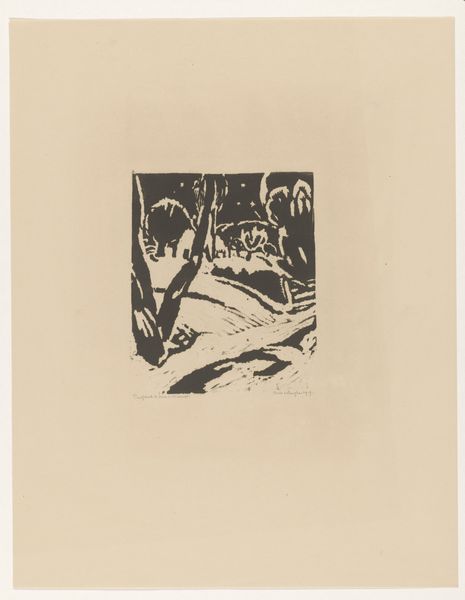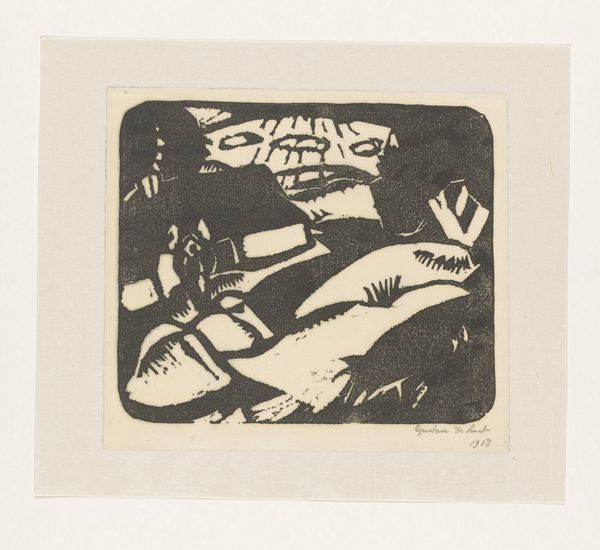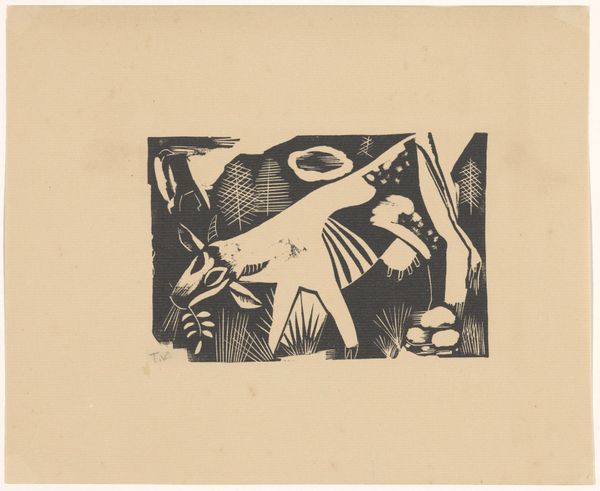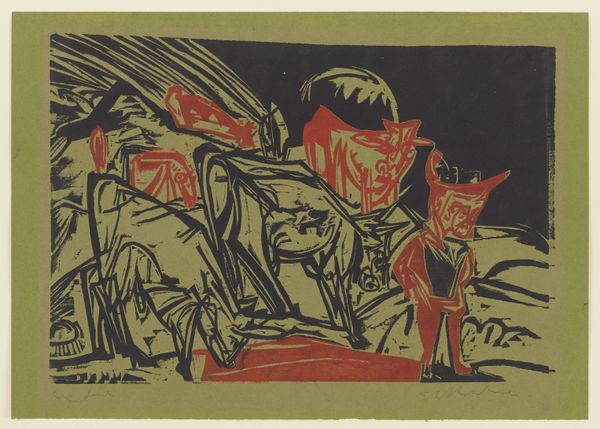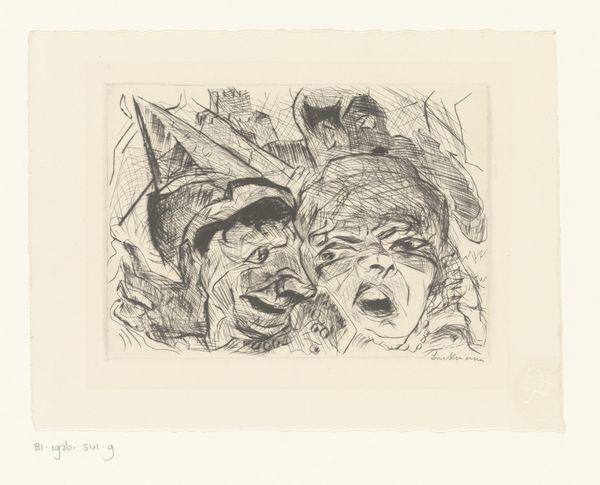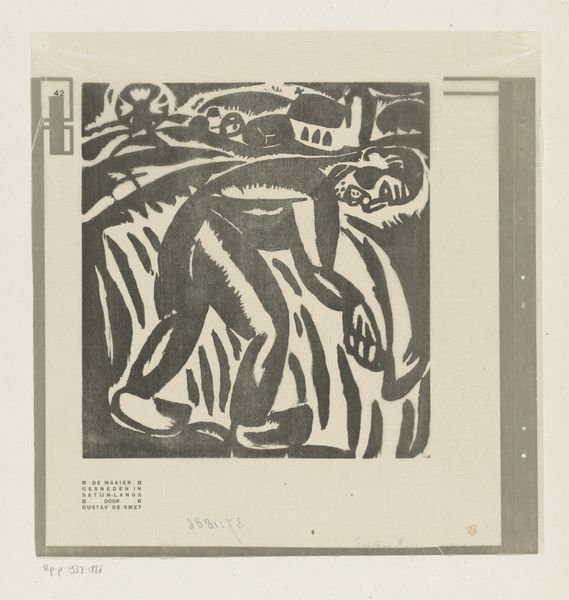
Dimensions: height 435 mm, width 554 mm
Copyright: Rijks Museum: Open Domain
Editor: This is "Geknielde man," a 1919 woodcut print by Frits van den Berghe. The stark black and white is quite striking and creates a really powerful, almost oppressive mood. What do you see in this piece? Curator: Well, immediately I'm drawn to the sociopolitical context of 1919. Europe was reeling from the aftermath of World War I. An expressionist woodcut like this, with its stark contrasts and distorted figure, really speaks to the anxieties and disillusionment of the time. How do you think the medium contributes to that feeling? Editor: I think the roughness of the woodcut, the lack of detail, emphasizes the rawness and pain of the subject. It feels very immediate and unfiltered. Curator: Exactly. Consider also the Black Arts Movement. Though later, it similarly used the woodcut medium, often in black and white, to depict powerful social messaging and imagery. This echoes that aesthetic and potent sense of immediacy and resistance. It bypasses academic polish for something altogether more guttural. It really pushes art into a public, politicized space. Editor: That's a great connection. So, the simplification and bold lines aren't just stylistic, but almost a political statement? Curator: Precisely! The public accessibility and bold visual statement inherent in woodcut make it a medium of the people, allowing messages, particularly difficult ones, to spread. Where do you think it might have been shown in 1919? Editor: I imagine it could have been in smaller galleries or maybe even as part of printed materials – pamphlets, newspapers…places where the common person could engage with it. Curator: Right! So the image isn't just of a kneeling man, but becomes a symbol of post-war trauma, dissent, and the public role of art in processing and challenging power. Editor: I never considered it that way, focusing instead on the emotion. It's fascinating to see how historical context reshapes my understanding. Curator: And for me, it’s exciting to remember how raw emotion is itself a critical lens through which to view both art and social movements.
Comments
No comments
Be the first to comment and join the conversation on the ultimate creative platform.
